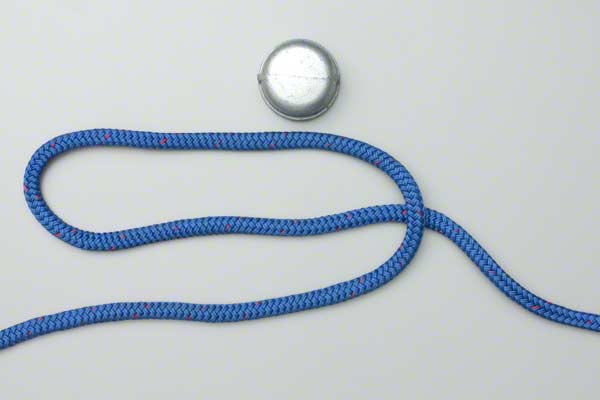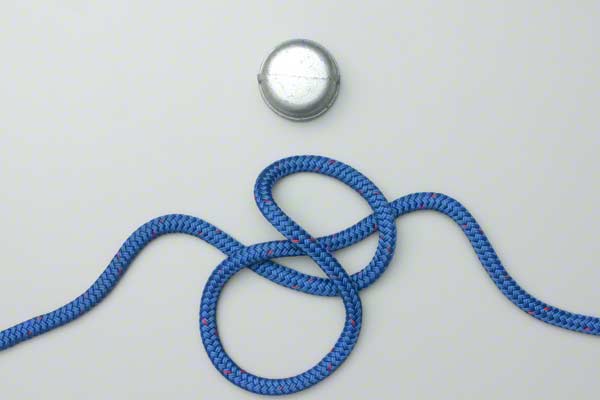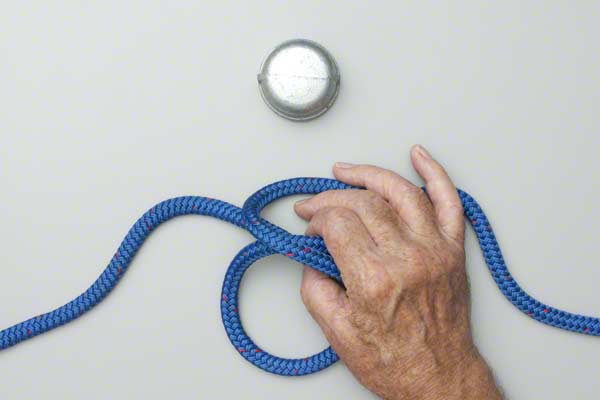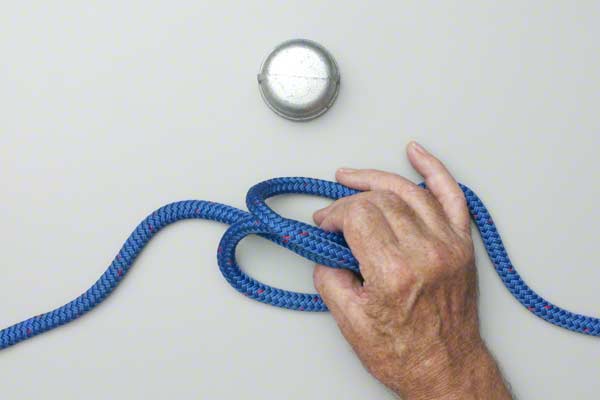Constrictor Knot (Folding Method) Tying
Form a loop in the rope. Fold this loop across the rope to form a figure 8 appearance. Lift the center of the figure 8 so that the loops fold down each side of the center to form the Constrictor Knot.








Constrictor Knot (Folding Method) Details
Uses: The Constrictor Knot (ABOK # 1188, p 216.) deserves to be much more widely known and used. It is an excellent quick temporary whipping for a fraying rope's end and can be used to keep a rope's end together while it is being whipped. It securely ties the neck of a sack or bag; it has been used as a temporary hose clamp; and it can be used to hold items together for gluing.
Alternatives: In addition to the Folding Method, the Constrictor Knot can be tied by the Twisting Method and by Threading the End when tying this knot round a rail or bar.
Using the Folding Method: The Twisting Method may be ideal for short lengths. However, when a piece of rope is being prepared to act as a binding, e.g., to hold large objects together while glue sets, the length required is too great to form the knot by just "twisting" the rope. The folding method is a better alternative.
Disadvantages: It fails when tied against a flat surface - it requires a curved surface for the binding turn to grip the Half Hitch.
Release: The knot can be very hard to undo - cutting the knot can be the only option. When this is necessary, the binding strand should be cut over the other constrictor strands, using them to protect your rope.
Rope Size: The animation shows the knot tied in large diameter rope. This is only for the photography. It is normally tied in twine or other small diameter line.
